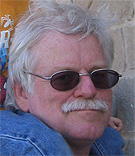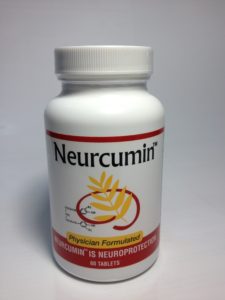 Gregory M Cole talks with ScienceWatch.com and answers a few questions about this month’s Fast Moving Fronts paper in the field of Biology & Biochemistry.
Gregory M Cole talks with ScienceWatch.com and answers a few questions about this month’s Fast Moving Fronts paper in the field of Biology & Biochemistry.
Article: Curcumin inhibits formation of amyloid beta oligomers and fibrils, binds plaques, and reduces amyloid in vivo Article: Curcumin inhibits formation of amyloid beta oligomers and fibrils, binds plaques, and reduces amyloid in vivo
Authors: Yang, FS;Lim, GP;Begum, AN;Ubeda, OJ;Simmons, MR;Ambegaokar, SS;Chen, PP;Kayed, R;Glabe, CG;Frautschy, SA;Cole, GM
Journal: J BIOL CHEM, 280 (7): 5892-5901 FEB 18 2005
Addresses: Univ Calif Los Angeles, Dept Med, Greater Los Angeles VA Healthcare Syst CRECC11E, 16111 Plummer St, Sepulveda, CA 91343 USA.
Univ Calif Los Angeles, Dept Med, Greater Los Angeles VA Healthcare Syst CRECC11E, Sepulveda, CA 91343 USA.
(addresses have been truncated.)
![]() Why do you think your paper is highly cited?
Why do you think your paper is highly cited?
Our paper shows that a small natural molecule, with established preclinical (National Toxicology Program) and clinical trial safety, directly binds and inhibits amyloid beta oligomer formation and toxicity in vitro and enters the brain and binds abeta in vivo where it dramatically reduces amyloid beta deposits even with late intervention in vivo.
Because the structure and binding is common for multiple beta sheet proteins, the paper is relevant to multiple protein aggregate disorders (Alzheimer’s disease [AD], tau pathologies, Parkinson’s disease [PD], Huntington’s disease [HD], CAG repeat disorders, etc).
![]() Does it describe a new discovery, methodology, or synthesis of knowledge?
Does it describe a new discovery, methodology, or synthesis of knowledge?
In 2001, we had shown that curcumin reduced amyloid accumulation with early intervention in an APP Tg model, but we had no mechanism. We presented data at meetings over the next several years showing that, like the well-studied amyloid beta vaccine/antibodies, curcumin binds to abeta aggregates and improves their clearance by microglia.
This paper does not include the microglia data, but shows the data demonstrating direct anti-oligomer drug activity and plaque-binding mechanisms that synthesize knowledge that can be generalized for multiple neurodegenerative diseases. It combines multiple useful in vitro and in vivo methods to show mechanism and in vivo utility of an agent with anti-protein aggregate activity.
“If curcumin succeeds in human trials for Alzheimer’s or any of the many other diseases of aging it shows promise for, it will become a major player in our prevention efforts. “
A key point of significance in this paper is that it is one of the only papers to show that, like a passive antibody, a small molecule can dramatically reduce aggregate accumulation after the plaque formation has plateaued. This is very important because amyloid formation occurs decades before clinical symptoms and plateaus before disease onset.
Our 2005 paper was followed by a paper from Brian Bacskai of the Harvard Medical School, who used multiphoton in vivo imaging to confirm that injected curcumin labeled plaques and also to prove that pre-existing plaques were actually cleared by curcumin treatment—similar to the antibody approaches now being used in trials.
![]() Would you summarize the significance of your paper in layman’s terms?
Would you summarize the significance of your paper in layman’s terms?
Neurodegenerative diseases are often caused by aggregated proteins with common structural features found in difficult-to-degrade proteins that can form long fibers. The one we are familiar with is found in hair, which is so difficult to degrade that it can last long after the person or animal producing it has died.
This type of protein structure is difficult for an animal or bacteria to digest—think of cats and fur balls. This type of protein structure is found in many age-related dementing diseases like AD but also in PD, “mad cow,” and other less common conditions.
Our paper shows that a small natural compound from curry spice which is safe to use in humans can treat these protein aggregates by binding directly to them in the laboratory and it also shows that it can enter the brains of living aged animals where it finds and binds the toxic protein aggregates that attack brain cells to cause a disease such as AD.
Our paper shows that curcumin can dramatically reduce the accumulation of this type of protein aggregate—even when intervention is late and after the aggregates have built up. Because these aggregates build up long before clinical symptoms, late intervention with a safe treatment offers hope for a new way to prevent or treat AD and related diseases.
![]() How did you become involved in this research and were any particular problems encountered along the way?
How did you become involved in this research and were any particular problems encountered along the way?
We have long sought to find a way to prevent or treat the diseases of aging because everyone is at risk for them and we have no cures. The first problem for AD has been to find animal models where drugs can be tested, so we worked with Professor Karen Hsiao Ashe of the Department of Neurology and Neuroscience at the University of Minnesota to develop a mouse model that academics could use (1996).
We sought to first test non-steroidal anti-inflammatory drug (NSAID) treatments because more than 20 epidemiological studies have shown NSAID users have less AD. In the year 2000, we reported that the most widely used NSAID (ibuprofen) delayed pathology in that model, but elderly people are at risk for GI bleeds and other problems from chronic NSAID use.
So we looked for safer NSAIDs and found that curcumin was an alternative used in traditional Indian and Chinese medicines. It also has antioxidant properties like vitamin E which has shown some promise, so we tested curcumin along with 12 other candidates against toxic beta amyloid aggregates in a rat model.
Curcumin was the best of our 12 candidates, so we moved it into the mouse model for chronic treatment. Curcumin worked well with early intervention, which we published in 2001.
Another NSAID (naproxen) actually looks like it might have reduced AD in a big prevention trial but that trial had to be stopped because of side-effect worries. So, this 2005 study showing curcumin works well against oligomers and plaques even with late intervention is promising.
![]() Where do you see your research leading in the future?
Where do you see your research leading in the future?
Curcumin has a problem with poor bioavailabilty in humans, so it hasn’t worked as well in human clinical trials as it does in preclinical tests, but we have now solved this problem and it is going back into the clinic.
![]() Do you foresee any social or political implications for your research?
Do you foresee any social or political implications for your research?
If curcumin succeeds in human trials for AD or any of the many other diseases of aging for which it shows promise, it will become a major player in our prevention efforts. Many researchers already have and will continue to contribute to this effort because curcumin may be turn out to be a wonder drug—like aspirin!
Greg M. Cole, Ph.D.
Associate Director, Basic Research
Geriatric Research, Education and Clinical Center (GRECC)
Associate Director
Mary Easton Alzheimer Disease Center
University of California at Los Angeles
Los Angeles, CA, USA
Professor, Departments of Medicine & Neurology
University of California at Los Angeles
Los Angeles, CA, USA
